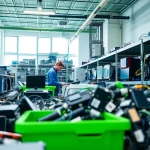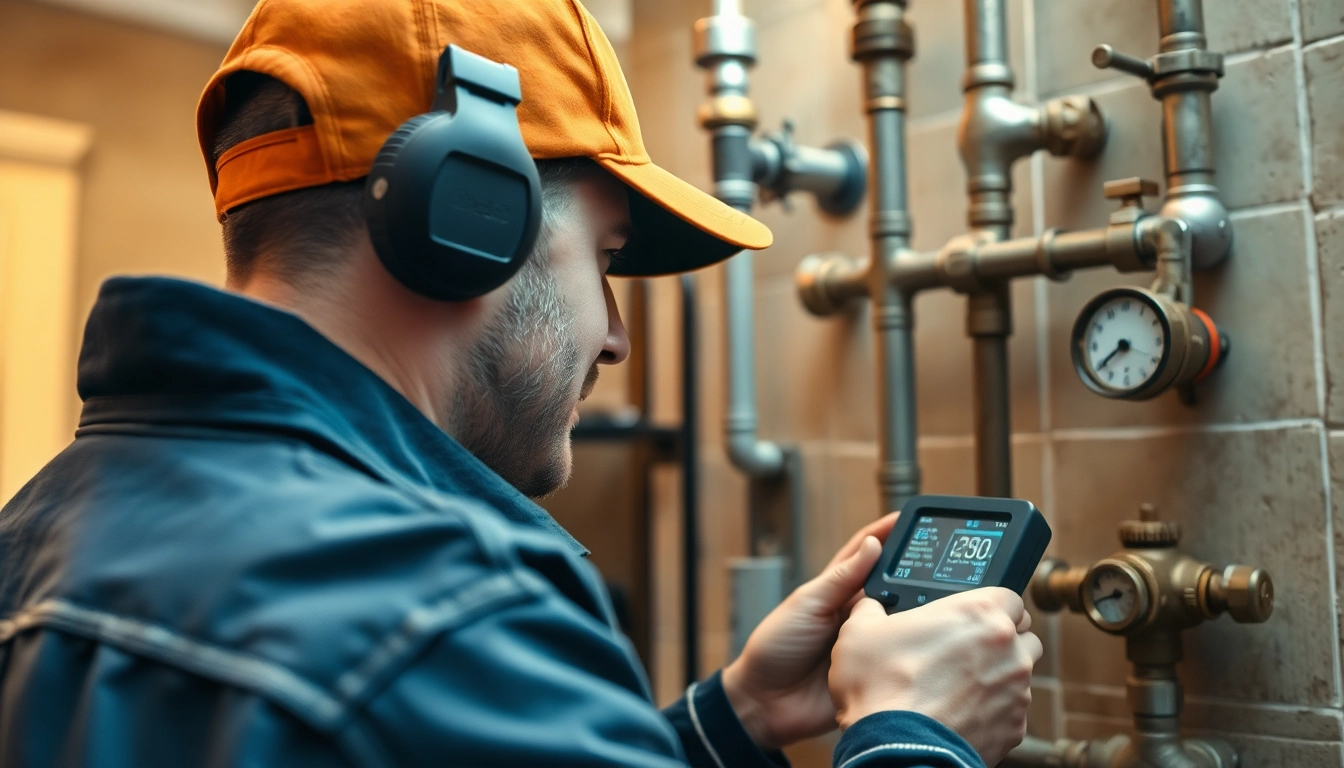Understanding Plumbing Leak Detection
What is Plumbing Leak Detection?
Plumbing leak detection is the methodical process of identifying and locating leaks in a water supply system or plumbing fixtures. Leaks can occur in various forms, from minor drips under a sink to significant breaches in underground pipes. Understanding how to detect plumbing leaks effectively is crucial for maintaining the integrity of plumbing systems and preventing costly damage.
The process integrates various technologies and techniques, often tailored to the unique environment and layout of a plumbing system. Detection methods can range from traditional visual inspections to advanced electronic leak-detection systems that employ sensors and specialized equipment. Regardless of the method used, the central goal remains to quickly and accurately identify the location of the leak before it leads to extensive damage.
Importance of Early Plumbing Leak Detection
Timely detection of plumbing leaks is essential for several reasons. Firstly, early detection helps in minimizing water waste, which directly contributes to lower water bills. Additionally, undetected leaks can lead to mold and mildew growth, health hazards, and structural damage. By catching these issues early, homeowners can avert larger repair costs and maintain a healthier living environment. Moreover, proactive leak detection can exponentially increase the longevity and efficiency of plumbing systems.
Common Types of Plumbing Leaks
Plumbing leaks can be categorized in various ways. Some of the most common types include:
- Pipe Leaks: Often caused by corrosion, high water pressure, or shifting ground.
- Faucet and Fixture Leaks: Typically arise from worn washers, seals, or O-rings.
- Slab Leaks: Occur in the pipes beneath the foundation of a building, often undetectable until significant damage has occurred.
- Toilet Leaks: Can go unnoticed for extended periods, leading to water waste and hidden damage.
Signs You May Need Plumbing Leak Detection
Visible Water Damage and Mold Growth
One of the most immediate signs of plumbing leaks is visible water damage, which may manifest as stains on ceilings, walls, or floors. Mold growth is another alarming signal that often indicates prolonged exposure to moisture, which stems from leaks. If you observe discoloration or watermarks, it is vital to act quickly, as mold can pose serious health risks.
Unexplained Water Bills
Receiving higher-than-normal water bills can be a clear indicator of a hidden leak. Monitoring your water usage regularly can help you identify sudden spikes in your bills. This increased usage may suggest an undetected leak that needs immediate attention to avoid waste and potential damage.
Unusual Sounds from Pipes
If you hear unusual sounds coming from your pipes, such as gurgling or hissing, it may point to air in the pipes due to a leak or a problem with the water supply system. These noises often indicate that water isn’t flowing as it should, warranting investigation to mitigate damage.
Methods for Effective Plumbing Leak Detection
Visual Inspections
Performing thorough visual inspections is the most straightforward method for detecting leaks. This approach entails checking visible pipes, fixtures, and appliances for signs of moisture or water damage. Homeowners can use a flashlight to access dark spaces, examining under sinks and behind appliances. Although simple, visual inspections may not capture leaks lurking behind walls or underground.
Using Leak Detection Technology
Today, numerous advanced technologies can assist in leak detection. Some of the most popular include:
- Acoustic Sensors: These devices detect the sounds produced by water leaks as they escape through pipes.
- Infrared Cameras: These cameras can identify temperature differences that indicate moisture, helping to locate hidden leaks more accurately.
- Moisture Meters: Built to measure the moisture content in walls or floors, these meters can pinpoint areas with excessive dampness, signaling a potential leak.
DIY vs. Professional Plumbing Leak Detection
While some homeowners may attempt to handle plumbing leak detection themselves with DIY methods, involving professionals can significantly enhance detection accuracy. Professional leak detectors have access to advanced technology, experience in diagnostics, and the ability to quickly assess and fix problems. DIY methods may work for minor issues, but for complex problems or hidden leaks, professional services are highly recommended for effective resolution.
Best Practices for Plumbing Leak Detection
Regular Maintenance and Inspections
Establishing a routine maintenance schedule can prevent leaks before they become problematic. Regular checks on fixtures and visible pipes can help in catching potential issues early. Moreover, engaging a professional plumbing service for periodic inspections can afford further security and peace of mind regarding a plumbing system’s health.
Choosing the Right Tools for Plumbing Leak Detection
If you decide to undertake leak detection yourself, having the right tools is essential. Options include moisture meters, infrared cameras, and acoustic leak detectors. Investing in these technologies can improve your chances of accurately identifying issues before they escalate. Moreover, familiarize yourself with the functionality of these tools to use them effectively during inspections.
Consulting with Professionals
Sometimes, the complexity or severity of a leak necessitates professional input. Consulting with a plumbing professional can save time and costs in the long run, primarily if advanced detection techniques are required.
What to Do After Plumbing Leak Detection
Repairing the Leak: Next Steps
Upon identifying a leak, promptly addressing the issue is crucial to mitigate further damage. Depending on your skills and the leak’s complexity, repairs may involve tightening fittings, replacing worn washers, or even replacing sections of piping. For complex plumbing matters, it is always advisable to enlist the services of a licensed plumber to ensure the repairs are safe and up to code.
Preventing Future Plumbing Leaks
Once a leak has been addressed, consider implementing preventive measures to avoid future issues. Regular maintenance schedules, routine inspections, and the use of quality plumbing components can drastically reduce the chances of leaks reoccurring. Moreover, monitoring water pressure and avoiding freezing temperatures can directly affect the longevity of your plumbing system.
Testing Your Repair Effectiveness
After repairs are completed, testing is crucial. Check for leaks by turning water back on and monitoring the repaired area over the subsequent days. Additionally, watch for other signs, such as water stains or unusual sounds. Confirming that repairs were effective ensures your plumbing system is back to optimal performance without the lingering threat of leaks.
For further assistance on troubleshooting and maintenance, consider exploring resources available at Plumbing Leak Detection, offering guidance and support tailored to specific plumbing needs.









